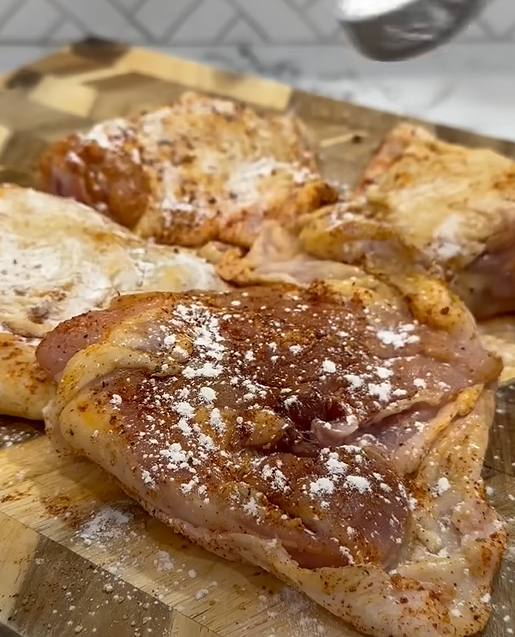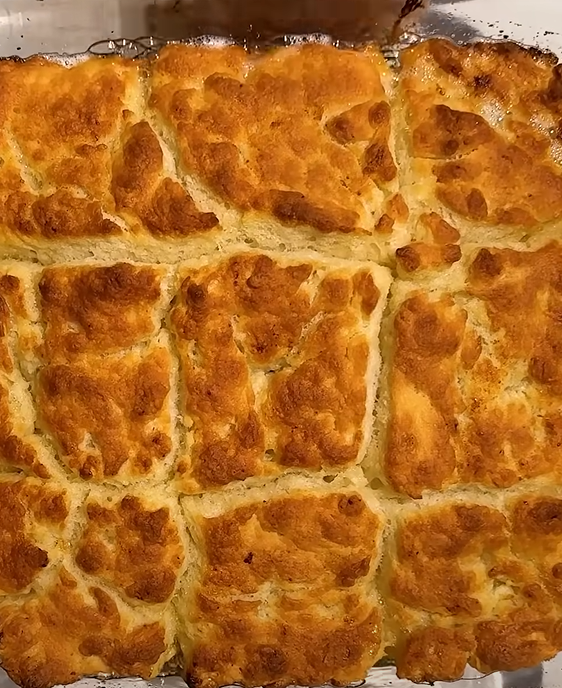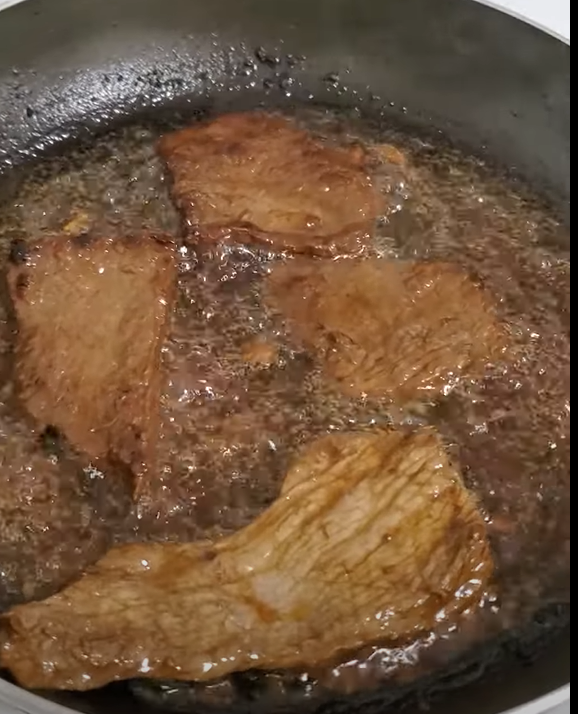When I first heard about chicken fried chicken, I’ll admit I was puzzled. Wasn’t all fried chicken just… chicken that’s fried? But after diving deep into Southern cuisine and perfecting this recipe over countless Sunday dinners, I’ve come to understand that chicken fried chicken represents something truly special in the culinary world.
This isn’t your ordinary fried chicken. Chicken fried chicken takes the beloved concept of chicken fried steak and applies it to tender chicken cutlets, creating a dish that’s crispy on the outside, juicy on the inside, and absolutely irresistible when smothered in creamy white gravy. It’s comfort food at its finest, and I’m excited to share my perfected recipe with you.
What Makes Chicken Fried Chicken Different?
Before we dive into the recipe, let me explain what sets chicken fried chicken apart from regular fried chicken. The key differences lie in the preparation and presentation:
Chicken Cut and Preparation : Instead of using chicken pieces on the bone, we use boneless chicken breasts that are pounded thin, similar to schnitzel preparation
Breading Technique : The chicken gets a double coating of seasoned flour, creating an extra-crispy exterior that holds up beautifully to the gravy
Serving Style : Unlike traditional fried chicken served dry, chicken fried chicken is always served with a generous helping of cream gravy
Cooking Method : Pan-fried rather than deep-fried, using just enough oil to create that perfect golden crust
Essential Ingredients for Perfect Chicken Fried Chicken
The beauty of this dish lies in its simplicity, but each ingredient plays a crucial role in achieving that perfect balance of flavors and textures.
For the Chicken:
- 4 boneless, skinless chicken breasts (6-8 oz each)
- 2 cups whole milk
- 2 large eggs
- 2 tablespoons hot sauce (I prefer Frank’s RedHot)
- 1 teaspoon salt
- 1/2 teaspoon black pepper
For the Breading:
- 3 cups all-purpose flour
- 1 tablespoon garlic powder
- 1 tablespoon onion powder
- 2 teaspoons paprika
- 1 teaspoon cayenne pepper
- 1 teaspoon dried thyme
- 2 teaspoons salt
- 1 teaspoon black pepper
For Frying:
- 2 cups vegetable oil (or enough for 1/2 inch depth in your skillet)
For the Cream Gravy:
- 1/4 cup reserved seasoned flour
- 2 1/2 cups whole milk
- 1/2 teaspoon salt
- 1/4 teaspoon black pepper
- Pinch of cayenne pepper
Step-by-Step Preparation Guide
Preparing the Chicken
The foundation of exceptional chicken fried chicken starts with properly prepared meat. I’ve learned that taking time with this step makes all the difference in the final result.
First, I place each chicken breast between two sheets of plastic wrap or parchment paper. Using a meat mallet or rolling pin, I gently pound the chicken to an even 1/4-inch thickness. This ensures uniform cooking and creates that tender texture we’re after. Don’t skip this step – it’s what transforms tough chicken breasts into melt-in-your-mouth cutlets.
Next, I prepare the buttermilk marinade by combining milk, eggs, hot sauce, salt, and pepper in a large bowl. I submerge the pounded chicken in this mixture and let it marinate for at least 30 minutes, though I prefer to let it sit for 2-4 hours when time allows. This marinade tenderizes the meat and adds incredible flavor depth.
Creating the Perfect Breading
The secret to exceptional chicken fried chicken lies in the breading technique. I combine all the dry ingredients in a large, shallow dish, whisking them together until evenly distributed. The key is getting the right balance of spices – enough to flavor the crust without overwhelming the chicken itself.
Here’s my tried-and-true breading process:
- Remove one piece of chicken from the marinade, letting excess drip off
- Dredge thoroughly in the seasoned flour mixture
- Dip back into the marinade briefly
- Return to the flour for a second coating, pressing gently to ensure adherence
- Place on a wire rack and repeat with remaining pieces
This double-dredging technique creates layers that result in that signature thick, craggy crust that stays crispy even under gravy.
Cooking Techniques for Restaurant-Quality Results
Achieving the Perfect Fry
Temperature control is absolutely critical when frying chicken fried chicken. I heat my oil to 325°F – hot enough to create a beautiful crust without burning the breading before the chicken cooks through.
I use a large, heavy-bottomed skillet or cast-iron pan with about 1/2 inch of oil. This isn’t deep frying; it’s more like shallow pan-frying, which gives you better control over the cooking process.
When the oil reaches temperature, I carefully add the chicken pieces, being careful not to overcrowd the pan. I typically cook two pieces at a time in a 12-inch skillet. The chicken should sizzle immediately upon contact with the oil.
Cooking Timeline:
- First side: 4-5 minutes until deep golden brown
- Second side: 3-4 minutes until golden and internal temperature reaches 165°F
- Total cooking time: 7-9 minutes per piece
The key is patience. Don’t flip too early, or you’ll risk losing that beautiful crust. I look for a deep golden-brown color and listen for the sizzling to become more gentle, indicating the moisture is cooking out of the breading.

Mastering the Cream Gravy
While the chicken rests, I make the cream gravy using the same skillet with all those beautiful browned bits. This is where magic happens – those crispy remnants from frying become the foundation of incredible flavor.
I leave about 1/4 cup of the frying oil in the pan and whisk in the reserved seasoned flour. This creates a roux that needs to cook for 2-3 minutes, stirring constantly to prevent burning. The mixture should become fragrant and slightly golden.
Gradually, I whisk in the milk, starting with just a splash to create a smooth paste, then adding the rest in a steady stream. The gravy will thicken as it simmers. I season with salt, pepper, and a pinch of cayenne, then let it bubble gently for 5-7 minutes until it reaches the perfect consistency – thick enough to coat the back of a spoon but still pourable.
Nutritional Information and Variations
| Nutrient | Per Serving (1 piece with gravy) |
|---|---|
| Calories | 485 |
| Protein | 42g |
| Carbohydrates | 31g |
| Fat | 22g |
| Saturated Fat | 8g |
| Fiber | 2g |
| Sodium | 890mg |
| Cholesterol | 125mg |
Healthier Variations
While chicken fried chicken isn’t exactly health food, I’ve developed some modifications for those watching their intake:
Lighter Breading Option : Substitute half the all-purpose flour with whole wheat flour and add 1/4 cup panko breadcrumbs for extra crunch with less density
Reduced-Fat Gravy : Use 2% milk instead of whole milk and reduce oil in the roux to 2 tablespoons
Baked Version : Spray breaded chicken with cooking oil and bake at 425°F for 20-25 minutes, flipping once halfway through
Serving Suggestions and Pairings
The beauty of chicken fried chicken lies not just in the dish itself, but in the complete meal experience. I’ve found that certain sides complement this rich, comfort food perfectly.
Classic Southern Sides
Mashed Potatoes : Creamy, buttery mashed potatoes are the traditional accompaniment, providing a perfect base for that delicious gravy
Green Beans : I prefer them cooked Southern-style with bacon or ham hock for added flavor
Coleslaw : The crisp, tangy contrast cuts through the richness beautifully
Cornbread : Essential for sopping up every last drop of gravy
Modern Accompaniments
For those looking to update this classic, I suggest:
- Roasted Brussels sprouts with bacon
- Honey-glazed carrots
- Garlic herb roasted potatoes
- Fresh garden salad with buttermilk dressing
Advanced Tips and Troubleshooting
Common Mistakes to Avoid
Through years of making this dish, I’ve identified the most frequent issues home cooks encounter:
Soggy Breading : Usually caused by oil temperature that’s too low or overcrowding the pan
Dry Chicken : Often results from skipping the marinade step or overcooking
Lumpy Gravy : Happens when milk is added too quickly to the roux
Bland Flavor : Insufficient seasoning in the flour mixture or skipping the marinating step
Professional Techniques
Temperature Monitoring : I always use a thermometer to check both oil temperature and internal chicken temperature
Resting Period : After frying, I let the chicken rest on a wire rack for 2-3 minutes, which helps redistribute juices and maintain crispiness
Gravy Consistency : If gravy becomes too thick, I thin it with additional warm milk. If too thin, I simmer it longer or whisk in a small amount of flour mixed with cold milk
Storage and Reheating Instructions
| Storage Method | Duration | Quality Rating |
|---|---|---|
| Refrigerator (covered) | 3-4 days | Good |
| Freezer (wrapped tightly) | 1-2 months | Fair |
| Room temperature | 2 hours maximum | Good initially |
Reheating Techniques
Oven Method (Recommended) : Preheat to 375°F, place chicken on wire rack over baking sheet, heat for 10-12 minutes
Stovetop Method : Heat in covered skillet over medium-low heat, flipping once, about 5 minutes total
Microwave Method : While quick, this will soften the breading significantly
Regional Variations and History
Chicken fried chicken has interesting regional variations across the American South. In Texas, it’s often served with jalapeños and spicier gravy. Louisiana versions might include Creole seasoning in the breading. Some Midwest interpretations add herbs like sage or rosemary.
The dish evolved from European schnitzel traditions brought by German immigrants, combined with Southern frying techniques and African American culinary influences. This cultural fusion created something uniquely American – a dish that represents the melting pot nature of Southern cuisine.
Frequently Asked Questions
Q. Can I use chicken thighs instead of breasts? A. Absolutely! Chicken thighs actually work wonderfully because they stay more moist during cooking. Just adjust cooking time slightly as thighs may take an extra minute or two.
Q. How do I know when the oil is the right temperature without a thermometer? A. Drop a small piece of breading into the oil. If it sizzles immediately and rises to the surface, the oil is ready. If it browns too quickly, the oil is too hot.
Q. Can I make the gravy ahead of time? A. Yes, but it’s best served fresh. If you must make it ahead, store it in the refrigerator and reheat gently, whisking in additional milk if needed to restore consistency.
Q. Why is my breading falling off during cooking? A. This usually happens when the chicken isn’t properly dried before breading, or when the oil temperature is incorrect. Make sure to pat chicken dry and maintain proper oil temperature.
Q. Can I use buttermilk instead of regular milk for marinating? A. Definitely! Buttermilk actually works even better as it’s more acidic and provides superior tenderizing. You might want to reduce the marinating time slightly as it works faster.
Q. What’s the best oil for frying? A. I prefer vegetable oil or peanut oil for their high smoke points and neutral flavors. Avoid olive oil as it has a lower smoke point and stronger flavor.
Q. How can I make this dish gluten-free? A. Substitute the all-purpose flour with a gluten-free flour blend designed for frying. The texture will be slightly different but still delicious.
Q. Is there a way to make this dairy-free? A. You can substitute the milk in the marinade with unsweetened plant milk, and use coconut milk or other non-dairy alternatives for the gravy, though the flavor will be different.
This chicken fried chicken recipe has become a cornerstone of my kitchen repertoire. It represents everything I love about Southern cooking – simple ingredients transformed into something extraordinary through technique and care. Whether you’re making it for a special Sunday dinner or just craving some serious comfort food, this recipe delivers restaurant-quality results every single time.
The key to success lies in not rushing the process. Take time to properly pound the chicken, let it marinate, maintain your oil temperature, and make that gravy with patience. Your efforts will be rewarded with a dish that brings people together around the dinner table, creating memories over shared plates of golden, crispy perfection.


